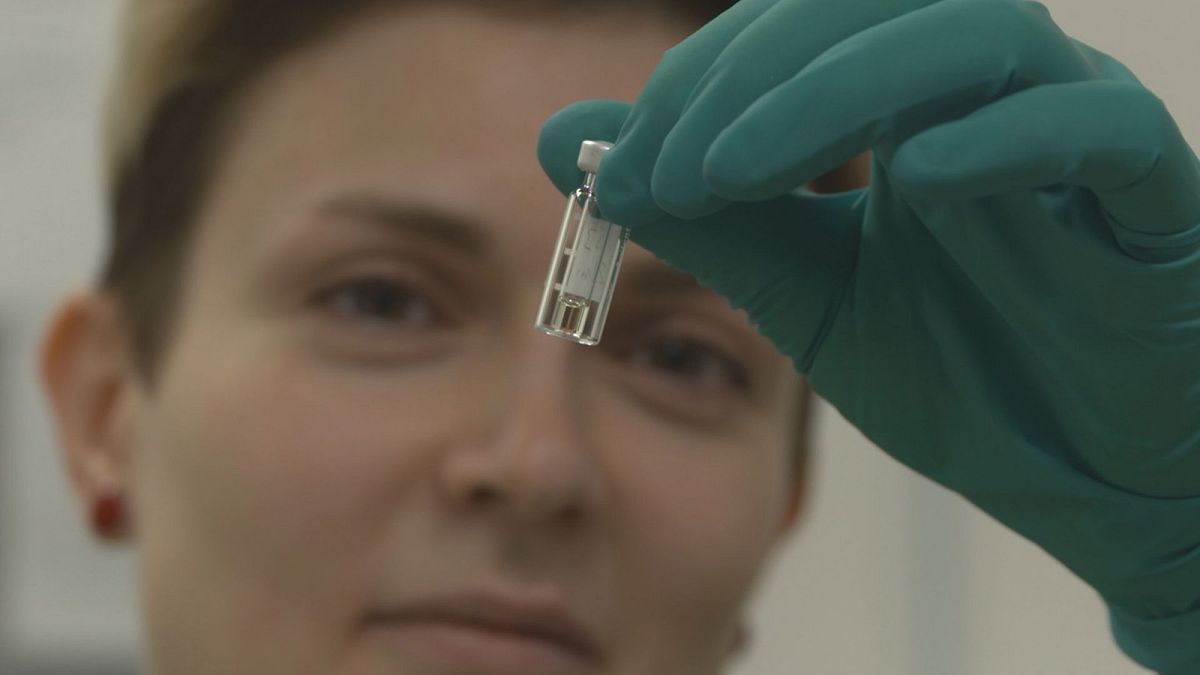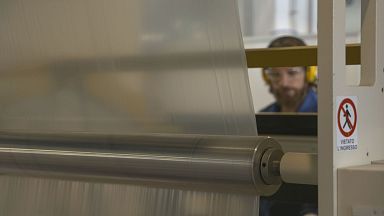Futuris takes a look at Europe's Bioeconomy sector and meets the people developing the myriad of bio-based products currently hitting the market around the whole continent.
Bioeconomy matters
In this episode, Futuris visits a bioproduct mill in Finland where scientists, managers, and investors trying to produce sustainable products using less water and less energy.
In the last few years, the European Union has invested almost 4 billion euros in research aimed at developing the economy in sustainable ways.
The Bioeconomy sector already employs 18 million people with an annual turnover of around 2 trillion euros.
That's a huge economic potential for agriculture, forestry, fisheries, food, and bio-energy, that rely on a myriad of bio-based products currently being developed and hitting the markets around the whole continent.
The potential of pulp
The Äänekoski bioproduct mill in Finland believes that it is possible to transform up to 6.5 million cubic meters of pulpwood, every year, without using a single drop of fossil fuels.
240 trucks and 70 fully loaded train-wagons feed the mill every day with birch, spruce, and pine.
The wood is used to produce pulp, which has an annual production of around 1.3 million tons.
And yet, no fossil fuels are used in the whole process. Its managers say the mill is completely self-sufficient.
"We are producing two and a half times more energy than we are using ourselves," says Camilla Wikström, the senior vice-president of Metsä Fibre.
"We have sludge, and from the sludge, we are making biogas. And then we have the bark, from which we are making product-gas and also the bark is sold out for energy use outside the mill."
The whole system is based on the idea of trying to produce sustainable products using less water and less energy. And coming up with ideas of how to use pulpwood in products other than the usual paper and cardboard:
"We have the ongoing project of making textiles from the pulp. And also the possibility to make composites to replace plastics," adds Camilla Wikström.
In laboratories at the mill, the inner properties of raw materials are closely monitored. Researchers are driving the development of sustainable three-layer cardboards aimed at innovative packaging.
"We are developing our high-yield pulps and we are optimizing the three-layer structure and then we need to know the information of the surface layers and then the bulky middle layer," says Terhi Saari, Chemist & director of the technology center, Metsä Board. "And (the aim is) to make enough strength and stiffness for our products".
The mill required an initial investment of 1.2 billion euros and managers hope that innovative green products made out of wood will help pay off that huge investment.
"Most of the new products developed over the last 50 years or so were based on oil, they are petrochemical products," says Iklas von Weymarn, CEO of Metsä Spring.
"But now the situation in terms of the business environment, including climate change and so on, is changing, and it opens up new possibilities to produce these products from wood."
Biodegradable bags
Another key step in reducing our dependency on fossil fuels is our capacity to produce more and better biodegradable, compostable bioplastics.
Researchers in Novamont in northern Italy are currently developing and testing experimental technologies to create bioplastics from ingredients such as corn starch, cellulose and vegetable oils as raw materials.
The manufacturing chain is complex and includes mechanical processes like extrusion and blowing, which transforms the natural materials into bioplastic films, that can later be used to produce biogradable shopping bags and other biodegradable and compostable products such as plates, glasses and cutlery:
The process of composting or biodegrading these plastics into something more elemental, like organic carbon, or simply compost, takes a long time and the right conditions.
Alessandro D´elicio, an industrial chemist at Novamont says it's an underground process: "molecules of these bioplastics become, little by little, simpler, thanks to the action of microorganisms."
The need for mechanical tests is also important as bioplastic must offer the same strength and resilience as ordinary petrochemical plastics. But there is even more to it:
"Beyond these mechanical tests, we can also make here qualitative tests," says Alessandro D´elicio.
"We can, for instance, measure the friction rate, or all properties linked to the permeability of the biomaterials, or its optical properties"
These tests are part of a European research project aimed at rethinking the whole plastic value chain, in an effort to create new business models and to better protect the environment.
Researchers meet regularly to brainstorm new innovations and eco-designs using bioplastics.
"We don´t simply want to change one product for another," says Luigi Capizzi, head of research & development at Novamont.
"This is not our aim. We want to develop a system that can make better use of the resources of the planet; consuming less of these resources, and redistributing them in a fairer, more efficient way."
Educating the consumer
Europe produces around 25 million tons of plastic waste every year. Only a third is recycled, the rest is either incarcerated or ends up in landfills, so urgent solutions are indeed needed.
Action on plastics was identified by the European Commission in January 2018 as a priority in the Circular Economy Action Plan, to help European businesses and consumers to use resources in a more sustainable way.
Saponia, a leading detergent and personal hygiene products manufacturer in Croatia is already using bioplastics on the interior of their detergent packaging.
"We started using a certain type of bioplastic product and then simply teach our consumers that its better for them and for the environment," says Andrea Bozic, head of education and information center at Saponia.
"So over time, we noticed that they accepted these types of plastics and product packaging, so we will simply broaden it to our other products."
Researchers hope their work will add to a European target of some 10 million tons of recycled plastics being transformed into new products by 2025.
Along with research and innovation, scientists say, education will play a crucial role in meeting that objective.
"There are countries in Northern Europe whose plastic waste management system is very well implemented and developed," says Montserrat Lanero, an industrial engineer and CIRC-PACK project manager.
"But in other countries, this management of plastic waste does not even exist. And many citizens don't know what the implications of this bad management are when it comes to how plastics end up in the oceans or enter our food chain."
"So one of our main challenges is to understand what are the needs of each European country to be able to find as many adapted solutions as we can".
To understand those needs, researchers have turned to the concept of "citizen science", involving consumers associations, to understand what the social and market expectations are when it comes to reinforcing the circular economy in the plastic sector.
"We need to empower the citizen. Because often they don't realize that their shopping decision is very important in moving the market towards more sustainable trends," says Belén Ramos, project officer for the environment at the Spanish Organisation of Consumers and Users Consumers - OCU.
"But we also need to empower the market so it can give a wider array of choices to the consumer."
One European research project studying the possibilities of creating new bioproducts which were previously made with chemicals or oil-based products is the Exilva biorefinery in Norway.
Scientists there are trying to transform trees into products for at sectors as diverse as the automotive industry, the adhesive industry, and even cosmetics.
Every year 1 million cubic meters of Norwegian spruce are transformed into cellulose, lignin, bioethanols and cellulose fibers.
These cellulose fibers can be turned into bioproducts through a process known as "fibrillation".
"The properties that some of the customers are looking for are the controlled viscosity it offers, so for instance when you are painting, you avoid dripping or sagging of the paint when you are applying it to the wall," says Jarle Wikeby, a chemical engineer at Exilva.
"Or you can control the hardening process within adhesives. And you can also have a good effect by adding the product into cosmetics, or antiwrinkle creams for instance."
Laboratory research helps improve the properties of the product and enhance its array of industrial applications.
Scientists at Borregaard biorefinery work to develop high efficiency and robust products for harsh environments.
"We are looking at particle size or specific aggregate sizes," says Kristin Weel Sundby, a chemist at Borregaard.
"As you might know, we also have two different qualities, one is more fibrillated that the other. And we are also starting to look at more film properties. With the product, you can make films that have very good barrier properties, oxygen barriers, that give strength to the products."
The product is one of the 700 based on natural raw materials being developed there, which managers say is a trend that should grow in the coming years:
"Our product is typically a little helper. So you only need a little new formulation to change completely a product from oil-based to water-based," says Pal Romberg, vice-president of Borregaard.
"So it is not really a cost issue here. Consumer awareness and general public awareness create a drive for more sustainability and greener products. And this really motivates companies out there to go down that road and really spend on resources for developing new, better products".
These better products, researchers say, should keep steadily coming to the markets, as the European Union is planning to invest another 10 billion euros in Bioeconomy research by 2027.





